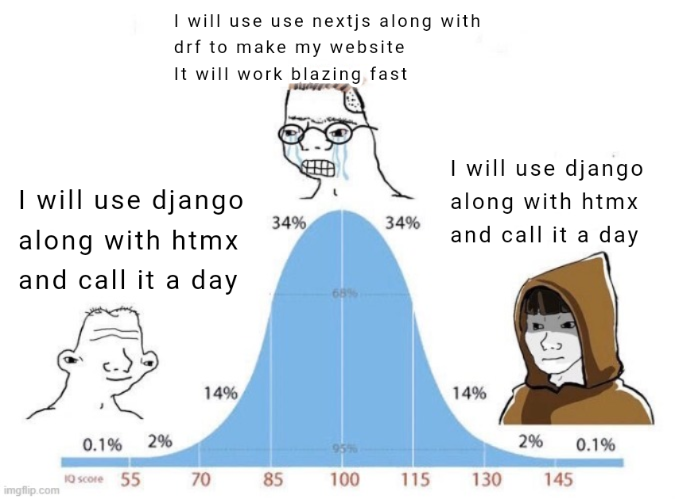
The task
Develop a Django form with customizable fields, implement a view for form editing, display a preview of the form with submitted values upon submission, and offer options to either return to form editing with a “back” button or submit the form for processing.
Build the edit view
We start off with a regular django form
class AwesomeForm(forms.Form):
...
and use it in a view. This view will accept GET and POST requests. On a GET request it will initially render the form. On a POST request it will simply render the form and its values. We will make use of that to create the back button in the preview view.
@require_http_methods(["GET", "POST"])
def edit_form(request):
if request.method == "POST":
form = AwesomeForm(data=request.POST)
return TemplateResponse(request, "_edit_form.html", {"form": form})
form = AwesomeForm()
return TemplateResponse(request, "_edit_form.html", {"form": form})
For the template we use a base template base.html, and a partial template _edit_form.html that will only contain the form element.
Note the hx-headers attribute of the body tag in base.html.
This sets the csrf header for HTMX requests.
<!doctype html>
<html lang="en">
<head>
...
<script src="{% static 'htmx.min.js' %}"></script>
</head>
<body hx-headers='{"X-CSRFToken": "{{ csrf_token }}"}'>
<div id="awesome-form">
{% include "_edit_form.html" %}
</div>
</body>
</html>
And this is the _edit_form.html.
It makes use of the hx-target attribute to swap the div with the id awesome-form
<form hx-post="{% url 'preview_form' %}" hx-target="#awesome-form">
...
<button>Preview</button>
</form>
Build the preview view
When the “Preview” button is pressed, then a POST request is made to the preview view.
It only accepts POST requests, because if the form is not valid, we want to render the _edit_form.html partial with the form errrors.
@require_http_methods(["POST"])
def preview_form(request):
form = AwesomeForm(data=request.POST)
if form.is_valid():
return TemplateResponse(request, "_preview_form.html", {"form": form})
return TemplateResponse(request, "_edit_form.html", {"form": form})
If it is valid, it renders _preview_form.html, where instead of input fields we only render the values and renders hidden input fields instead.
This form also contains a “Back” button, that simply re-POSTs it’s data to the edit view, so we can comfortably re-edit it.
<form hx-post="{% url 'submit_form' %}" hx-target="#awesome-form">
...
{% for field in form %}
{{ field.as_hidden }}
{% endfor %}
...
<button hx-post="{% url 'edit_form' %}" hx-target="#awesome-form">Back</button>
<button>Submit</button>
</form>
Finally, when we press the “Submit” button, this truly submits the form to the submit_form view.
@require_http_methods(["POST"])
def submit_form(request):
form = AwesomeForm(data=request.POST)
if form.is_valid():
# do something with the form data then return a thank you page
return TemplateResponse(request, "thank_you.html", {"form": form})
return TemplateResponse(request, "_edit_form.html", {"form": form})
Limitations
- This method will not work for file uploads because we can’t keep them between POST requests. For this, we probably have to do some javascript magic to keep them in the local storage, until the final form submission.
